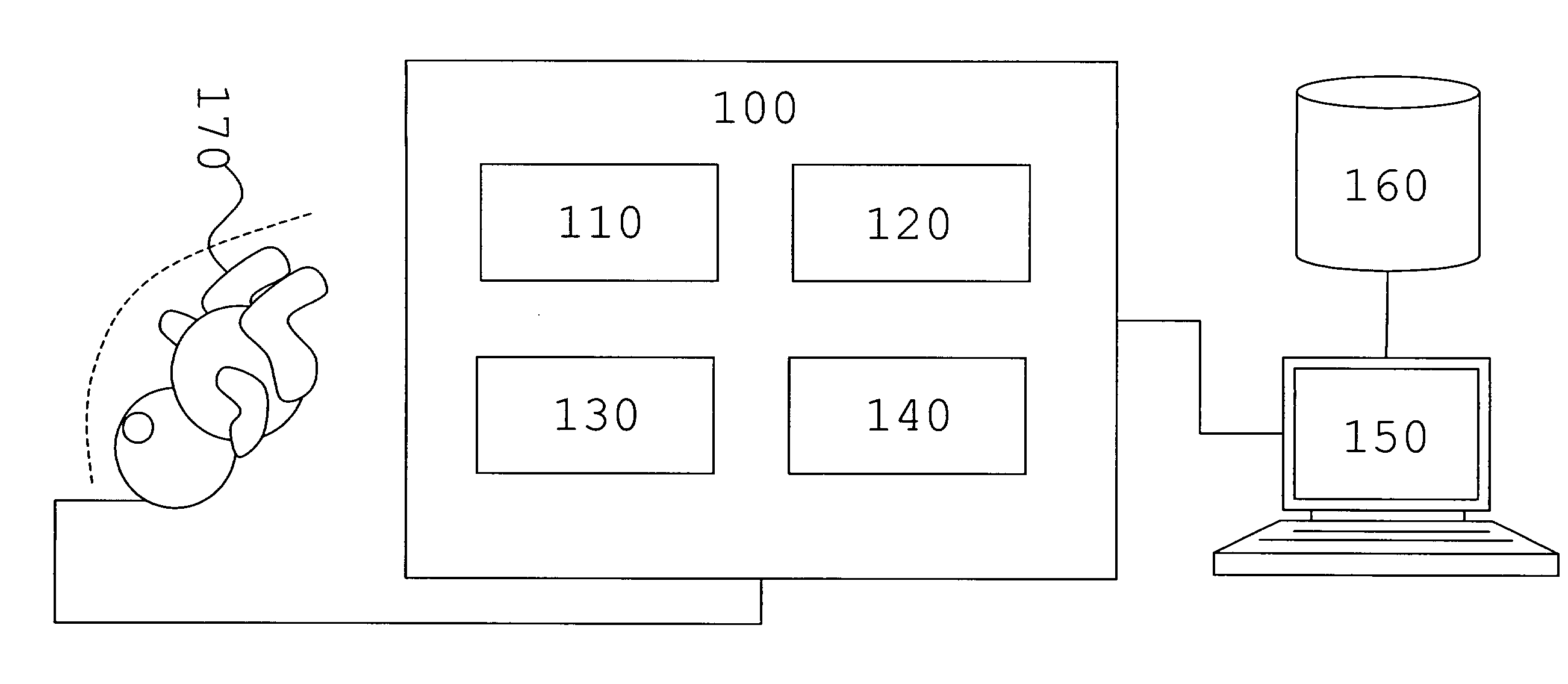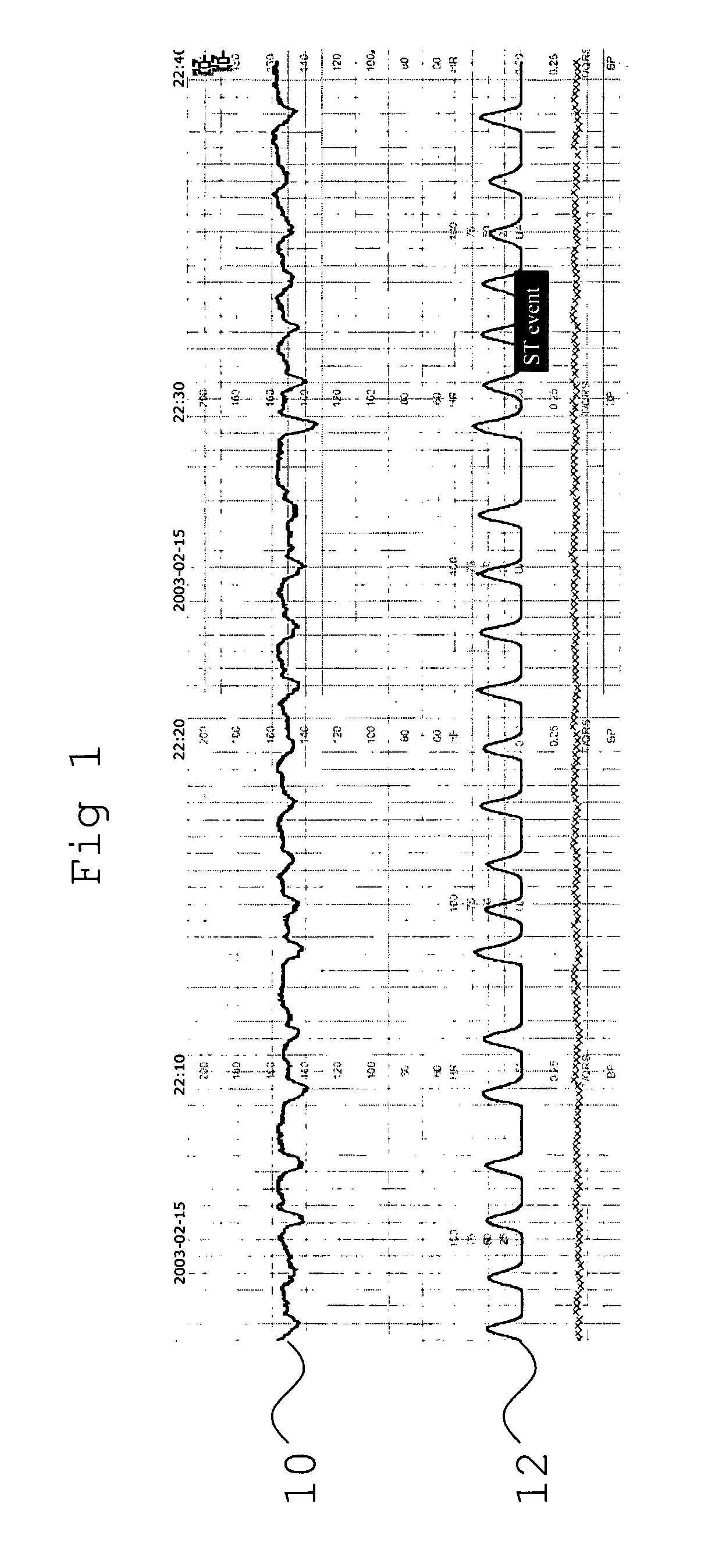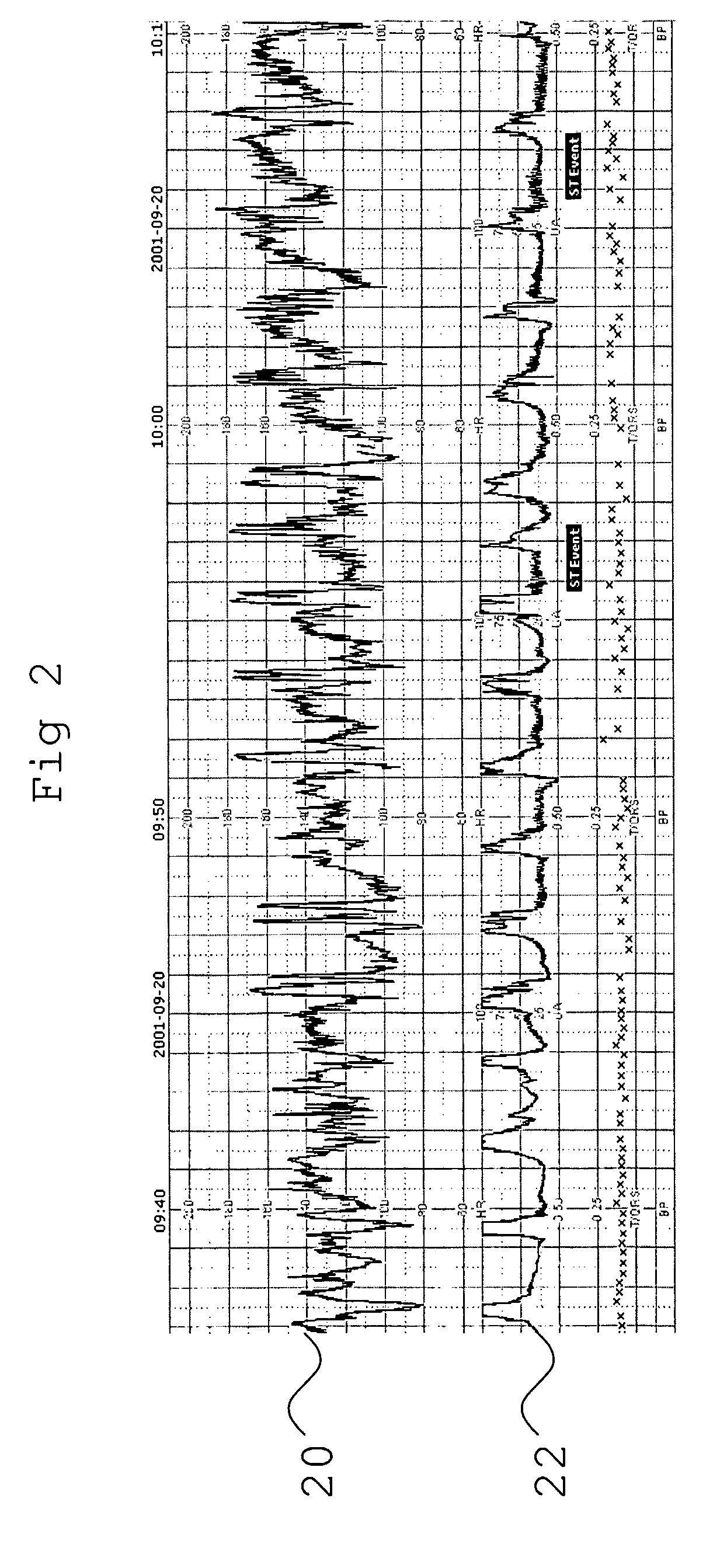Assessment of Fetal Reactivity by Fetal Heart Rate Analysis
a technology analysis, which is applied in the field of fetal heart rate (fhr) monitoring, can solve the problems of difficult deciphering of non-stationary heart rate, misinterpreting early warning signs provided by anomalies in fhr beat-to-beat variation, and unable to accurately assess fetal reactivity, etc., to achieve the effect of improving the accuracy of computerised assessment of fhr variations during labour
- Summary
- Abstract
- Description
- Claims
- Application Information
AI Technical Summary
Benefits of technology
Problems solved by technology
Method used
Image
Examples
Embodiment Construction
[0076]During labour the FHR is monitored for signs of fetal distress (lack of oxygen). FIG. 1 shows a 35 minute STAN® recording of a 1st stage of labour. The case illustrates a situation of lack of FHR variability and reactivity (preterminal FHR pattern) that at time of the recording was not recognised in spite of the ST event. The figure also depicts low measurements of “residual” markers of FHR reactivity and variability (Frequency distribution within the 3-4 ms range of residual measurements (FD3-4 ms) being th percentile of residual measurements being <3 ms).
[0077]The FHR 10 is displayed together with uterine activity 12. Here, although the FHR 10 does rise in conjunction with an increase in uterine activity 12 (i.e. contractions), the FHR variation is less than usually expected at this stage. While most experienced obstetricians would be aware that the FHR 10 was abnormal, such a reading would not necessarily trigger other alarms (such as an ST event). Therefore there are occas...
PUM
 Login to View More
Login to View More Abstract
Description
Claims
Application Information
 Login to View More
Login to View More - R&D
- Intellectual Property
- Life Sciences
- Materials
- Tech Scout
- Unparalleled Data Quality
- Higher Quality Content
- 60% Fewer Hallucinations
Browse by: Latest US Patents, China's latest patents, Technical Efficacy Thesaurus, Application Domain, Technology Topic, Popular Technical Reports.
© 2025 PatSnap. All rights reserved.Legal|Privacy policy|Modern Slavery Act Transparency Statement|Sitemap|About US| Contact US: help@patsnap.com



